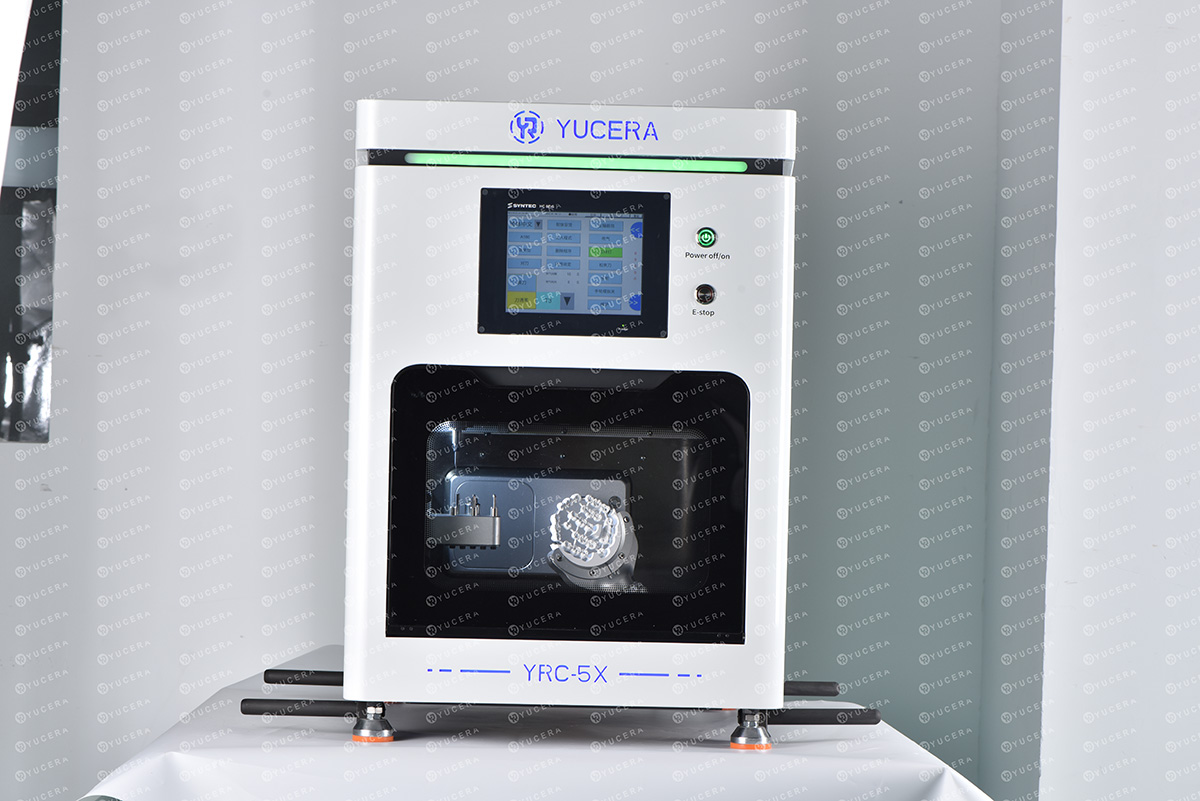How long do zirconia all-ceramic dental crowns last ?
2024-09-20
2025-02-23
The main difference between a 4-axis dental milling machine and a 5-axis dental engraving and milling machine is the number of working axes and machining capacity of each of them. Here are the specific differences between these two types of milling machines:
4-axis dental milling machine
Number of axes of motion: The 4-axis engraving and milling machine has three linear axes (X, Y, Z axis) and one rotary axis (usually the A axis, which is used for the rotation of the workpiece).
Machining range: 4-axis machines are capable of more complex three-dimensional machining, but due to the limitations of the axis of rotation, they may not be as flexible as the 5-axis when machining some complex shapes that require multi-angle machining.
Machining efficiency: 4-axis machines may need to clamp the workpiece multiple times during machining, which may increase the machining time and preparation time.
Application scenario: It is suitable for processing regular restorations such as dental bridges and crowns.
5-axis dental milling machine

Number of motion axes: The 5-axis engraving and milling machine has three linear axes (X, Y, Z axis) and two rotary axes (A axis and B axis, respectively for the rotation of the workpiece and the tool).
Machining range: The 5-axis machine is capable of more complex 5D machining, and can process multiple faces of the workpiece without reclamping, achieving more complex shapes and angles.
Machining efficiency: The 5-axis machine can complete more processing in one clamping, reducing the number of clamping times of the workpiece, and improving the processing efficiency and accuracy.
Application scenario: It is suitable for processing restorations with complex shapes and high precision requirements, such as personalized abutments, implant bridges, etc.
summary
5-axis dental milling machines offer greater flexibility and machining capabilities due to their additional rotary axes, capable of handling more complex designs and finer details. 4-axis dental engraving and milling machines, on the other hand, may be more advantageous in terms of cost and ease of operation. The type of engraving and milling machine you choose depends on your specific machining needs, budget, and productivity requirements.